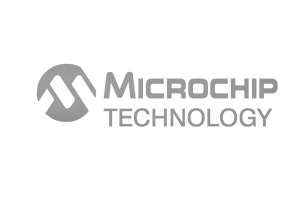ATA5771C-PXQW Overview
The ATA5771C-PXQW is a highly integrated 13.56 MHz NFC transponder IC designed for secure identification and authentication in industrial applications. Featuring a low-power architecture and advanced analog front-end, it supports fast and reliable data communication compliant with ISO/IEC 14443 Type A standards. Its embedded EEPROM offers flexible data storage, while integrated security features enable robust anti-collision and password protection, making it ideal for access control, asset tracking, and contactless identification. The device??s compact package and low supply voltage enhance ease of integration into space-constrained systems. For more technical insights, visit IC Manufacturer.
ATA5771C-PXQW Technical Specifications
| Parameter | Specification |
|---|---|
| Operating Frequency | 13.56 MHz (NFC / ISO/IEC 14443 Type A) |
| Supply Voltage | 2.4 V to 5.5 V |
| EEPROM Memory | 1024 bits (128 bytes), organized in 16 pages |
| Data Transfer Rate | 106 kbit/s |
| Operating Temperature | -40 ??C to +85 ??C |
| Package Type | SOIC-8 |
| Security Features | Password protection, anti-collision support |
| Communication Interface | ISO/IEC 14443 Type A contactless interface |
| Power Consumption | Low power standby and active modes |
| Additional Interfaces | Single-wire serial interface for system integration |
ATA5771C-PXQW Key Features
- High integration of NFC transponder and EEPROM memory: Enables secure, contactless data storage and transmission without external memory, simplifying system design and reducing component count.
- ISO/IEC 14443 Type A compliance: Ensures compatibility with a broad range of NFC readers, facilitating seamless interoperability in diverse industrial environments.
- Embedded security mechanisms: Password protection and anti-collision features support reliable multi-tag operation and data integrity, critical for secure identification applications.
- Wide voltage range (2.4 V to 5.5 V): Offers flexible power supply options, accommodating various industrial power architectures and enhancing device robustness.
- Low power consumption: Optimized for energy-efficient operation, extending system battery life in portable and remote installations.
- Compact SOIC-8 package: Facilitates integration into space-constrained designs without compromising performance or reliability.
- Single-wire serial interface: Simplifies microcontroller communication, reducing PCB complexity and improving system integration.
ATA5771C-PXQW Advantages vs Typical Alternatives
This transponder IC offers superior integration of secure memory and contactless interface compared to typical discrete solutions. Its low supply voltage operation and low power consumption provide enhanced energy efficiency, while embedded security features deliver reliable protection against unauthorized access. The device??s ISO/IEC 14443 Type A compliance ensures broad compatibility, making it an effective choice for industrial identification and tracking applications where accuracy, power efficiency, and robust security are essential.
🔥 Best-Selling Products
-

Texas Instruments BQ24075 Linear Battery Charger IC – 5mm x 4mm QFN Package
-

Texas Instruments INA219 Current Sensor Module – SOIC Package, Precision Monitoring
-

Texas Instruments LM4041 Precision Voltage Reference – SOT-23 Package
-

Texas Instruments OPA2134 Audio Op Amp – Dual, High-Performance, SOIC-8 Package
Typical Applications
- Access Control Systems: Used in secure entry solutions to enable contactless authentication, improving user convenience and enhancing security management in industrial facilities.
- Asset Tracking: Facilitates real-time monitoring and identification of equipment, tools, and components, reducing loss and improving inventory accuracy.
- Industrial Automation: Integrates with control systems for device identification and configuration, streamlining manufacturing and process workflows.
- Contactless Identification: Supports applications requiring fast and reliable NFC-based ID verification, including personnel badges and vehicle identification.
ATA5771C-PXQW Brand Info
The ATA5771C-PXQW is part of a product family developed by a leading semiconductor manufacturer specializing in secure identification and contactless communication solutions. This device embodies the brand??s commitment to delivering high-performance, reliable ICs optimized for industrial environments. Designed with advanced security and low power features, it reflects the company??s expertise in NFC technology and memory integration, providing engineers and system designers with robust tools for next-generation identification and authentication systems.
FAQ
What communication standards does this NFC transponder support?
The device supports ISO/IEC 14443 Type A standard at 13.56 MHz, ensuring compatibility with a wide range of NFC readers and enabling fast, contactless data exchange suitable for industrial identification and authentication tasks.
🌟 Featured Products
-

“Buy MAX9312ECJ+ Precision Voltage Comparator in DIP Package for Reliable Performance”
-

QCC-711-1-MQFN48C-TR-03-1 Bluetooth Audio SoC with MQFN48C Package
-

0339-671-TLM-E Model – High-Performance TLM-E Package for Enhanced Functionality
-

1-1415898-4 Connector Housing, Electrical Wire-to-Board, Receptacle, Packaged
How much memory is available for data storage?
It features 1024 bits (128 bytes) of embedded EEPROM memory, organized into 16 pages. This non-volatile memory allows flexible storage of user data, configuration parameters, or security credentials.
What security features are integrated into the device?
The chip includes password protection mechanisms and anti-collision support to prevent data interception and ensure reliable operation in environments with multiple NFC tags or transponders.
📩 Contact Us
What supply voltage range does the device support?
The device operates reliably across a wide voltage range from 2.4 V to 5.5 V, making it suitable for diverse industrial power systems and enhancing design flexibility.
Can this IC be easily integrated into existing industrial systems?
Yes, the compact SOIC-8 package and single-wire serial interface facilitate straightforward integration into existing PCB layouts and system architectures, simplifying design and reducing time to market.





